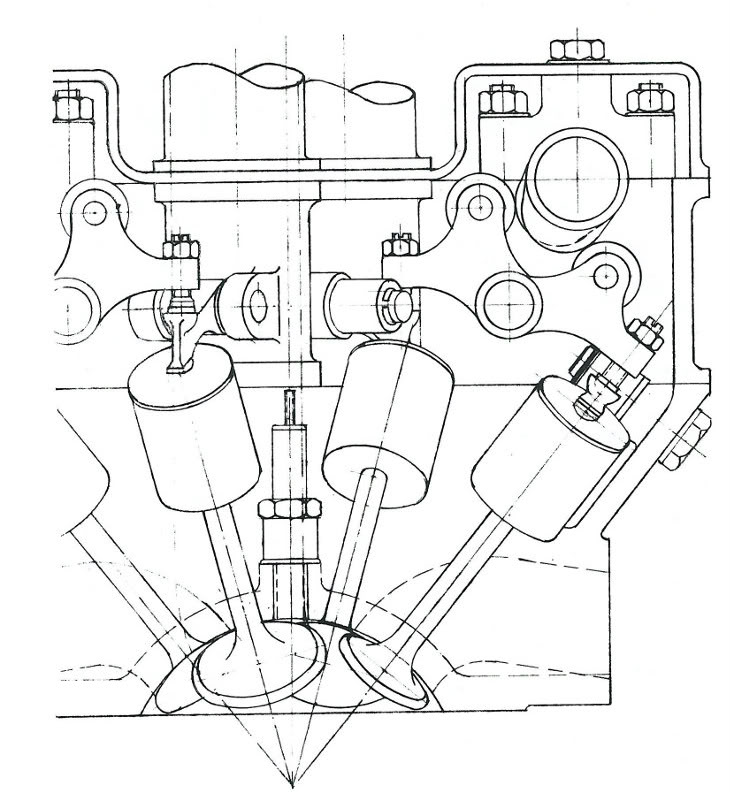I proposed a couple sketches along these lines a few months back.
viewtopic.php?p=737286#p737286
Could also retain the E-E-I-I format, only rotated 90* from typical. Geometry question: will the diagonal arrangement permit greater valve area?Tommy Cookers wrote: ↑06 Jun 2018, 15:15this presumably 'diagonally opposed' as tried by F1 Repco-Brabham and F2 BMWs (Apfelbeck) in the 1960s
the unreliable F1 RB860 32 valver of 1968 had type 50 'diagonal' heads (16 inlets and 16 exhausts) or the conventional type 60
diagonal head sequence going round the chamber - exhaust - inlet - exhaust - inlet
conventional sequence going round the chamber - exhaust - exhaust - inlet - inlet
The Apfelbeck head is interesting. However, in the current formula, it could not be applied without modification.
The Apfelbeck would need a recursive/reticulated exhaust runner to ensure legality. The regulations would not prevent them from doing other unconventional layouts:5.1.9 Engine exhaust gases may only exit the cylinder head through outlets outboard of the cylinder bore centre line and not from within the “V” centre.
-Vertical or "outside vee" intake runners (an "empty vee", as it were).
-Exhaust flanges between camshafts yet still outside the geometric vee.
It should be noted that none of Wazari's hints or claims over the year(s) have ever been connected to actual hardware or real occurrences.





